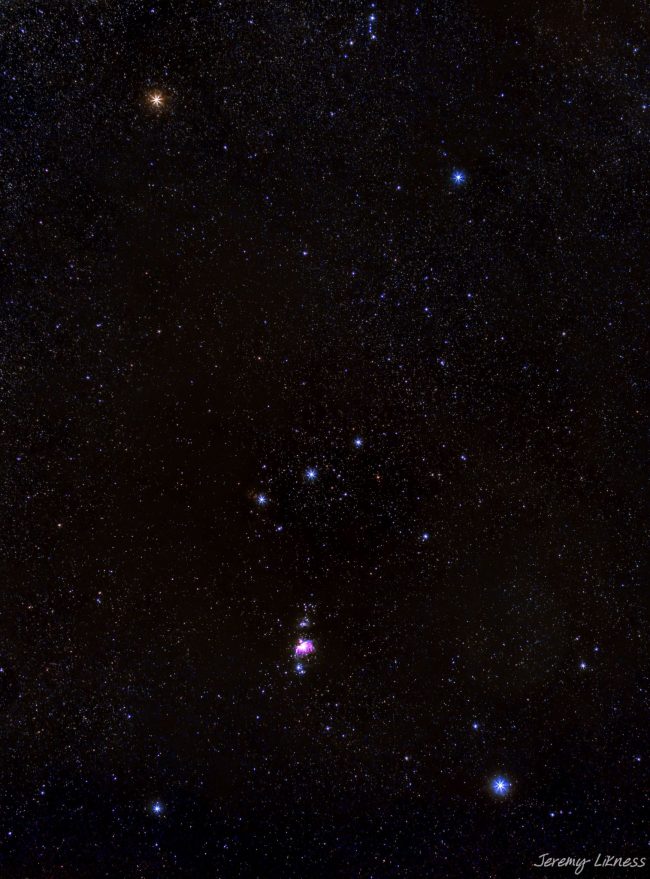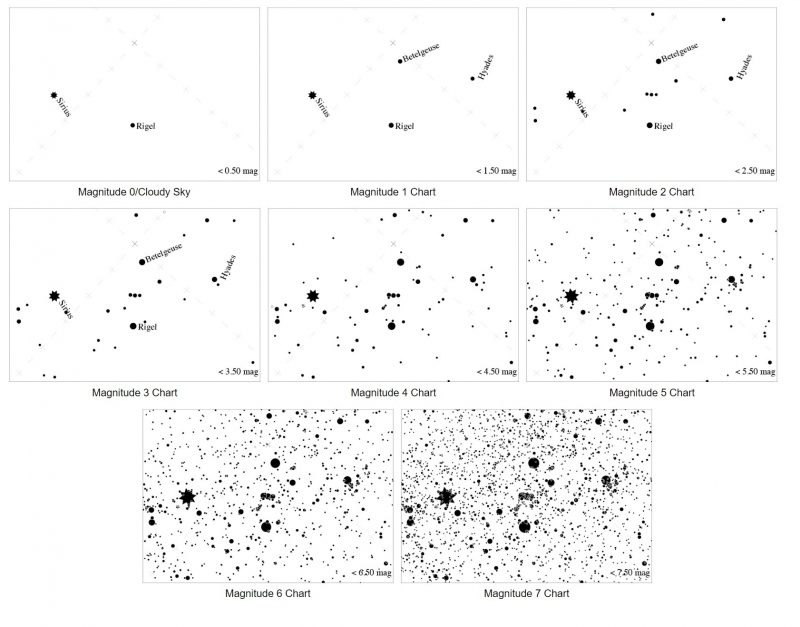
Globe at Night
From 2011 to 2021, the average increase in brightness of the night skies over North America and Europe was 9.6% per year. That means that, for many of us, the stars are disappearing. In an effort to raise awareness of light pollution – and to assess the state of our night skies – an international citizen-science campaign called Globe at Night wants you to survey your sky. The project runs every month around new moon, when the sky is darkest.
From March 13 to 22, 2023, Globe at Night is asking that you look toward the easy-to-find constellation Orion the Hunter, to determine how many of Orion’s stars you can see in your sky.
Last chance to get a moon phase calendar! Only a few left. On sale now.
6 easy steps to participate
There are only six easy steps required to participate. Here’s what Globe at Night asks you to do:
1. During the campaign dates, go outside more than an hour after sunset (8-10 pm local time). The moon should not be up. Let your eyes become used to the dark for 10 minutes before your first observation.
2. Use a night sky app on your phone outside to find the constellation [Orion for March] from where you are.
3. Go to the Globe at Night Report page to start to enter Globe at Night measurements. Make sure you are in “Nighttime version”.
4. With a smart phone, the app will put in the date, time, location (latitude/longitude) automatically. Otherwise please type them in. For your location, type the street address closest to your observation along with the city, state or province and country.
5. Choose the star chart that looks most closely to what you see toward your constellation. That is, what is the faintest star you can see in the sky and find in the chart?
6. Chose the amount of cloud cover at the time of observation and then click on the “submit data” button.
That’s it! I participated in February’s campaign using my smart phone. It was easy. From my front lawn in the suburbs, I could see stars to magnitude 4. After I submitted my data, I learned that I was the 123,090th citizen scientist to submit data.
Example of a star map for March
Each month, Globe at Night gives the Northern and Southern Hemispheres different options for which constellation to observe. For March, besides Orion you also have the option of Gemini in the Northern Hemisphere and Canis Major in the Southern Hemisphere. Visit this page to see what constellations they suggest for the other months of the year.

Bottom line: Participate in the March campaign for Globe at Night by looking at Orion and reporting how many of its stars you can see.











